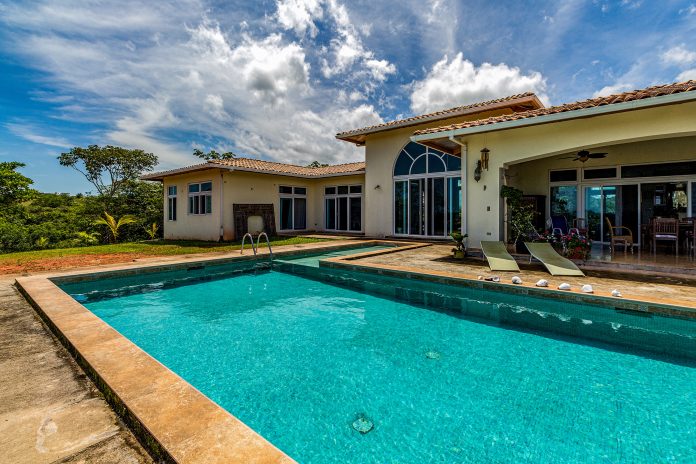Times come when a homeowner wishes to close down his or her pool for the season. Perhaps you won’t have the time to use it, or the weather isn’t optimal for keeping it open for use.
Many people struggle with closing up their pools as they don’t know how to do it properly. Maintaining the longevity of the pool requires keeping it covered and protected from the elements. Check out some steps to take when closing up your pool.
The Basics
The steps to close an in-ground and above-ground pool vary. Let’s take a look at how one should prepare at the outset.
In-ground Pools
The first step when preparing your pool for a seasonal close is ensuring the pool’s chemistry is balanced to last throughout the winter. You do not want scales forming on the side of your pool during winter, as this will be messy when opening the pool.
Before closing your pool, make sure you sanitize the pool. Scrub the walls and bottom with a brush and clear out any silt or algae from the pool. Drain any water in the heating and filtering systems before covering your pool.
Above-ground Pools
Closing your pool may seem like a daunting task, but it can be easily done if you follow the right steps. A single mistake can cost you thousands, and this is why we are here to help.
To close your above-ground pool, remove and store your pump and filters safely. Disconnect all hoses from the pool and let it drain. Once you are done, inflate and deploy your pool pillows to cover your pool.
Techniques to Keep in Mind
There is a lot more to closing your pool than slapping on a cover and getting your inflatable hot tub set up for sporadic use (https://beesights.com/best-inflatable-hot-tub-reviews/).
To help you do it right, below are a few tips to have on hand.
Right Timing
Timing is everything when closing up a pool. Doing it too early encourages algae growth, which makes it hard to open the pool at the onset of spring. To do it right, enjoy your pool, and wait till late summer. A good rule to follow is wait until the water is temperature is lower than 65 degrees Celsius. Start making preparations a few days before you close the pool for the best results.
Clean It Up
Before closing your pool, brush the sides and bottoms and then vacuum it. A thorough cleaning before closing your pool prevents algae growth and reduces the workload when opening your pool again.
Test the Water
Take a sample of your pool to a pool store for testing. Your pool’s chemistry is important when closing your pool. Make sure the pH is between 7.4 and 7.6, and the alkalinity is between 100 and 150 ppm. Opt for the top ranges to be sure your pool chemistry will hold until the onset of summer.
Correct Common Problems
If your pool’s chemistry is not desirable, Correct the problem by adding chemicals.
Add Chemicals
To balance your pool’s chemistry throughout the winter, you will need to add the following chemicals to your pool:
- Chlorine shock
- Winter algaecide
- A pH increaser or an alkalinity increaser
- Sanitizers such as bromine and chlorine
Chlorine shock destroys all algae in your pool. The best practice would be shocking five to seven times before closing the pool.
Remove the Filter and Pump
Most pool owners make the mistake of leaving the filter and pump attached throughout winter, which can be a cause of more problems. Remove the pump and all hoses and store them well, as you do not want them misplaced. The pump, chlorinator, and hoses tend to last longer when stored inside during winter. Irrespective of the filter you are using, you need to remove and clean it before storage.
To Drain or Not to Drain Your Pool
There is no point in draining your pool, but one should lower the water level. This protects the skimmer from freezing due to low temperatures.
Covering Your Pool
Once you have done all the preparations mentioned above, the last step should be covering your pool. An above-ground pool requires an air pillow under the cover. On the other hand, an in-ground pool only requires clips to secure the cover.
Analysis of the Best Practices in the Industry
For best results, here are a few of the best practices in the industry:
- Use clips and cables to secure the cover.
- Clean your pool thoroughly before closing.
- Shock your pool a few times before closing.
- Test your pool’s chemistry.
- Lower your water level 4 inches below the tile.
Tools You Can Use
When closing your pool for the season, below are tools you will require:
- A pool cover
- An air pillow
- Chlorine shock
- Winter algaecide
- A pH increaser or an alkalinity increaser
- Sanitizers such as bromine and chlorine
- Brush
Final Thoughts
These tips should help you avoid unwelcome surprises and keep the swimming pool safe and clean. Follow them carefully every time you need to close your pool for the best results.
Find a Home-Based Business to Start-Up >>> Hundreds of Business Listings.
















































